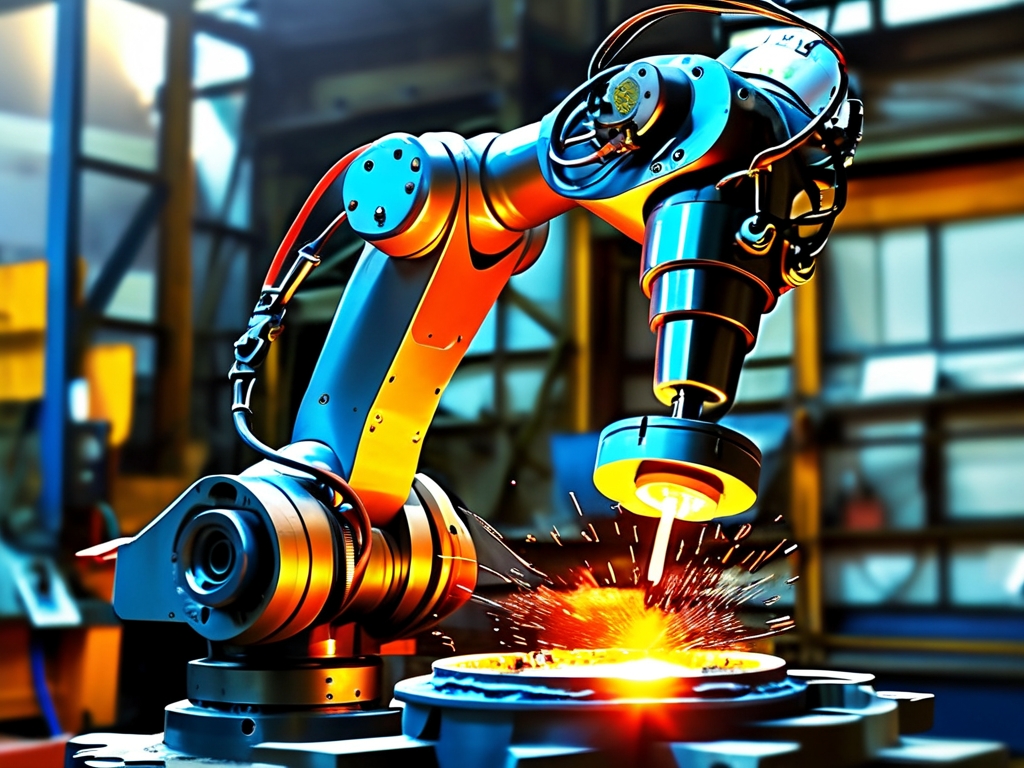The manufacturing industry has undergone a transformative shift with the integration of robotics into traditional processes. Among these advancements, robotic die casting technology stands out as a game-changer, revolutionizing how metal components are produced with precision, efficiency, and scalability. This article delves into the mechanics, applications, benefits, and future trends of robotic die casting, offering a detailed exploration of its role in modern industrial automation.
1. Understanding Die Casting and Robotics Integration
Die casting is a metal-forming process where molten metal is injected into a mold cavity under high pressure. Traditionally, this process relied heavily on manual labor for tasks like mold setup, metal injection, and part extraction. However, the of robotics has automated these steps, enhancing consistency and reducing human error.

Robotic systems in die casting typically involve six-axis industrial robots, equipped with specialized end-effectors for handling molds, trimming excess material, and performing quality inspections. These robots are integrated with sensors and AI-driven software to adapt to real-time process variables, such as temperature fluctuations or mold wear.
2. Key Applications of Robotic Die Casting
The versatility of robotic die casting makes it indispensable across industries:
- Automotive Manufacturing: Robots produce engine blocks, transmission housings, and structural components with micron-level precision.
- Consumer Electronics: Aluminum and magnesium alloy parts for smartphones and laptops are cast using robots to ensure thin-walled, lightweight designs.
- Aerospace: High-strength, heat-resistant components for aircraft engines benefit from robotic accuracy and repeatability.
A notable example is Tesla’s Gigafactories, where robotic die casting machines create large vehicle chassis parts in a single step, eliminating hundreds of welding and assembly operations.
3. Advantages of Robotic Die Casting Systems
- Enhanced Precision: Robots achieve tolerances as tight as ±0.05 mm, critical for complex geometries.
- Increased Productivity: Automated systems operate 24/7, reducing cycle times by up to 40% compared to manual processes.
- Improved Safety: Removing workers from high-risk tasks like handling molten metal minimizes workplace injuries.
- Cost Efficiency: While initial investments are high, long-term savings from reduced scrap rates and labor costs justify the expenditure.
4. Technical Challenges and Solutions
Despite its benefits, robotic die casting faces challenges:
- High Initial Costs: Advanced robotic systems require significant capital. However, modular designs and leasing models are making them accessible to smaller manufacturers.
- Maintenance Complexity: Robots demand regular calibration and software updates. Predictive maintenance tools powered by IoT sensors now preemptively address issues.
- Material Limitations: Certain alloys may solidify unevenly. Innovations like vacuum-assisted casting and real-time thermal monitoring mitigate these issues.
5. The Role of AI and Machine Learning
Modern robotic die casting systems leverage AI to optimize parameters such as injection speed, pressure, and cooling time. Machine learning algorithms analyze historical data to predict defects and adjust workflows autonomously. For instance, companies like Bosch use AI to reduce porosity defects in aluminum castings by 30%.

6. Sustainability in Robotic Die Casting
Automation supports eco-friendly manufacturing:
- Energy Efficiency: Robots consume less energy per unit than traditional machinery.
- Material Recycling: Automated systems precisely control metal usage, minimizing waste. Scrap metal is often recycled within the facility.
- Reduced Emissions: Closed-loop systems and electric-powered robots lower carbon footprints.
7. Future Trends and Innovations
The future of robotic die casting is shaped by emerging technologies:
- Collaborative Robots (Cobots): Smaller, flexible cobots will work alongside humans for hybrid manufacturing setups.
- 3D-Printed Molds: Additive manufacturing enables rapid prototyping of complex molds, shortening production cycles.
- Digital Twins: Virtual replicas of die casting systems allow real-time simulation and optimization without disrupting physical operations.
8. Case Study: Revolutionizing Automotive Production
In 2023, Toyota implemented a fully robotic die casting line for its hybrid vehicle batteries. The system reduced part weight by 15% while doubling output capacity. This success underscores the technology’s potential to address demands for lighter, more efficient electric vehicles.
Robotic die casting technology represents the convergence of precision engineering, automation, and digital innovation. By addressing historical inefficiencies and unlocking new possibilities in metal forming, it positions industries to meet the challenges of high-volume, high-quality production in the 21st century. As AI and sustainability practices evolve, robotic die casting will continue to redefine manufacturing paradigms, setting new benchmarks for speed, accuracy, and environmental responsibility.


